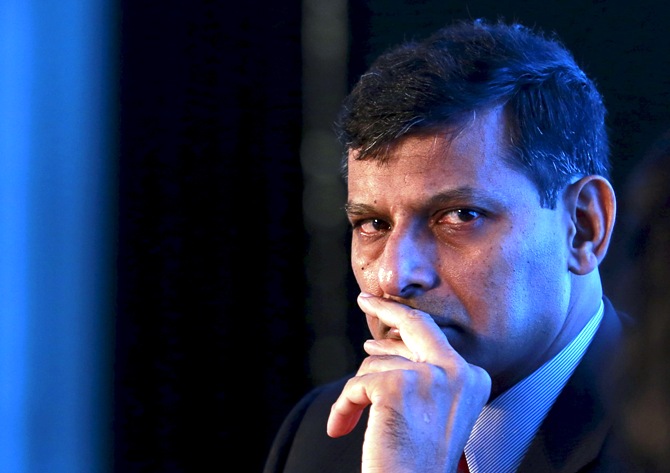 As banks reel under huge bad debts, Reserve Bank of India Governor Raghuram Rajan today said steps taken by the central bank and the government should help lenders clean up their balance sheets by March 2017.
As banks reel under huge bad debts, Reserve Bank of India Governor Raghuram Rajan today said steps taken by the central bank and the government should help lenders clean up their balance sheets by March 2017.
Rajan said banks have been given more powers and flexibility to deal with the bad loans, which have crossed 6 per cent as of June quarter.
The gross NPA of the public sector banks rose to 6.03 per cent as of June 2015 from 5.20 per cent in March 2015.
According to domestic rating agency Icra, total stressed advances (NPAs plus standard restructured accounts) rose to 10.7 per cent as of September 2015 and is likely to settle down at 10.3 per cent by March next.
"We hope that over the span of next year. . . say by March 2017, a full clean-up will have been done by banks. . . the idea is to put the real assets back on track with whatever needs to be done," Rajan told reporters at the post-policy briefing.
"The first step was with things like 5:25, SDR, with bringing in new promoters, among others.
“Given that banks have more powers now, we can now be a little more careful about recognition, and the first step was to do away with the forbearance starting April 1, 2015," he said.
"We are in constant dialogue with banks on a number of issues, including the assets on their balance sheets and we are talking to them about what is being done under the 5:25 scheme, and others.
“We have given a number of facilities to banks to improve their asset quality," he said.
The Governor said the central bank and the government are very concerned over bad loans and expressed hope that “going forward these additional powers as well as the additional recognition that the banks will be doing will clean up the balance sheet in a significant way so that banks would be in a position to grow and lend.
"That is something that we are fully engaged in right now. We hope that the outcomes will be visible soon."
"Our next step is to make sure that what should be classified as 'A' is classified as 'A' and not 'B', and we are in constant dialogue with banks.
“We are also looking at how some of these existing facilities are used to make sure that we are not kicking the can down the road," Rajan further said.
Rajan said as banks recognise more of what needs to be recognised as bad loans and that they deal with them (both NPAs plus restructured assets), which is an important part of cleaning up their balance sheets, they will be able to bring that down, and not just by provisioning, but also by putting some of these assets back on track.
He said both public and private sector banks are facing bad loans problems but more of the problem is with the public sector banks because they went more into infrastructure investment where many of the difficulties lie.
According to an Icra report, during the first half of the fiscal, the pace of fresh NPA generation remained stable at 3.3 per cent, leading to an increase in gross NPA from 4.4 per cent as of June quarter, to 4.8 per cent by September.
On the near-zero bad asset sales to asset reconstruction companies since RBI tightened the rules from April, Rajan said "pricing is a problem around the world."
"Banks are reluctant to sell at the prices that ARCs are willing to buy.
“So there is always a wedge between them.
“At some point they both come to an agreement and assets are sold.
“Typically, assets are sold at prices that are lower than what the banks will like to have," he said.
On the banking sector reforms underway and already completed under the PJ Nayak committee report, which was submitted 15 months back, Rajan said a number of actions have already taken place, such as splitting the posts of chairmen and MDs/CEOs of banks, appointing some from the private sector etc.
There is also a process underway to appoint new bank board members who are typically more professional.
"The bank board bureau is being step up.
“So a number of actions have already taken place. My sense is these are being quite positive and these things plays out over time but let us see how things move forward," the Governor said.
It can be noted that Finance Minister Arun Jaitley on November 23 met state-run bank chiefs and discussed various issues, including bad loans and credit flow to productive sectors of the economy.
In August, the government had launched a seven-point agenda to revive the state-run banks, which included a Rs 70,000-crore (Rs 700-billion) capital infusion over the next four years, starting with Rs 25,000 crore (Rs 250 billion) this year, apart from steps to de-stress the banks of NPAs by introducing governance reforms.
Image: RBI Governor Raghuram Rajan. Photograph: Reuters











 © 2025
© 2025